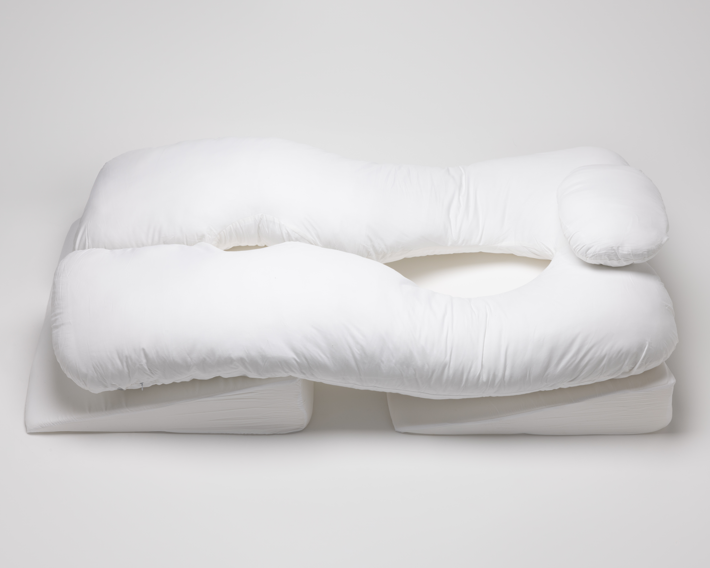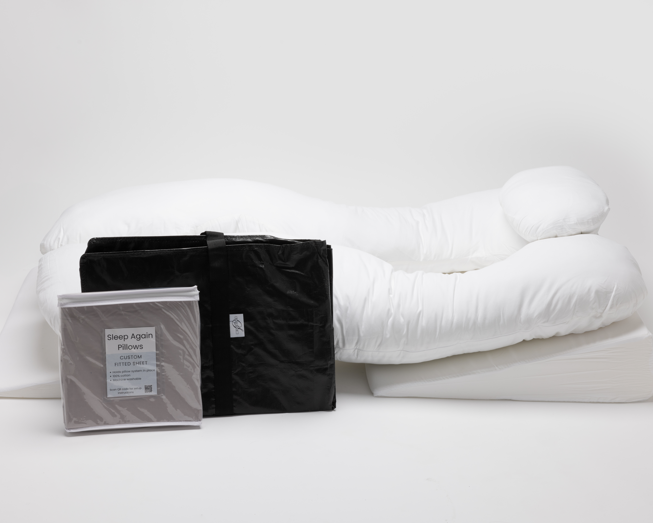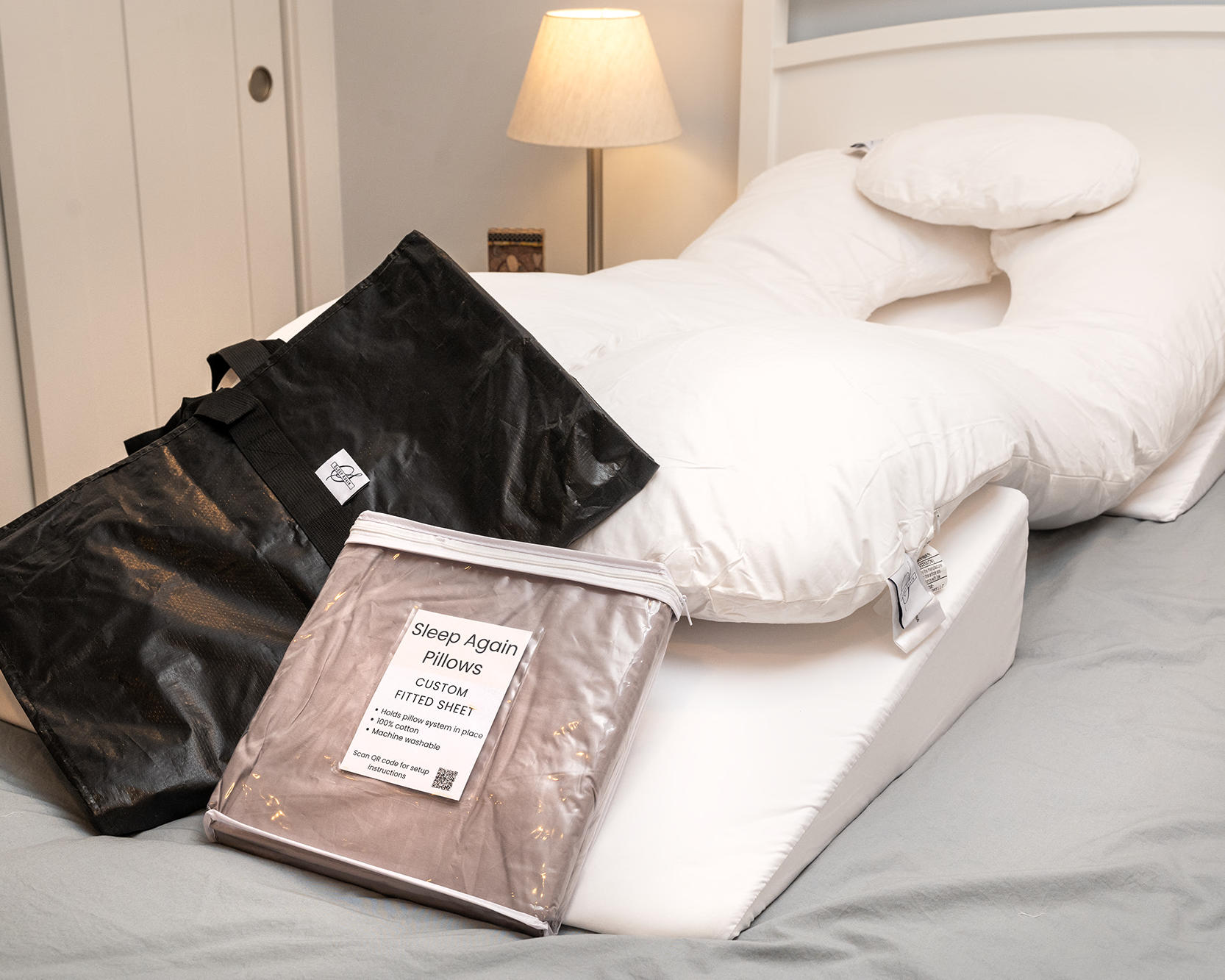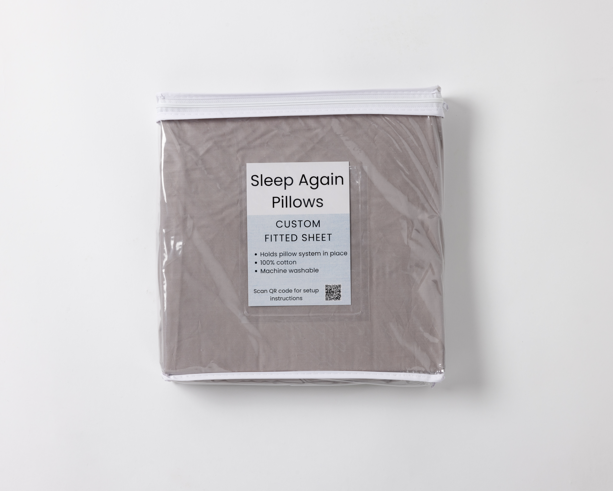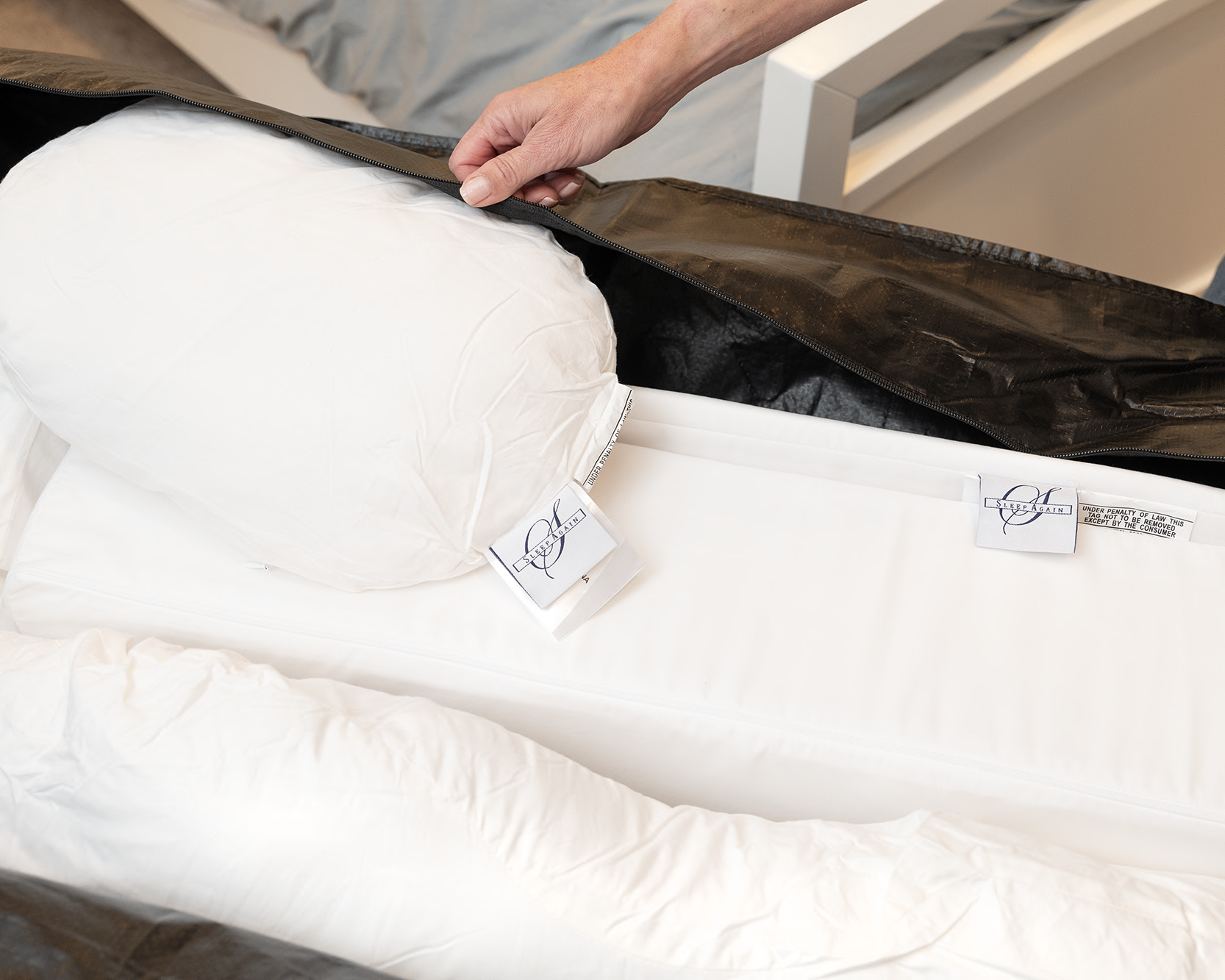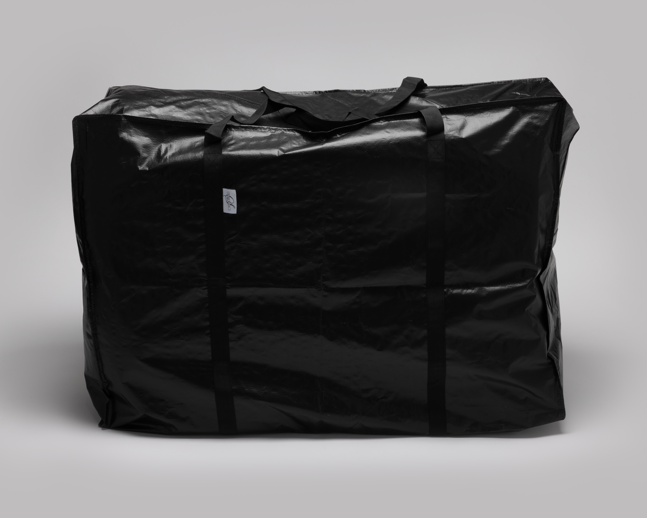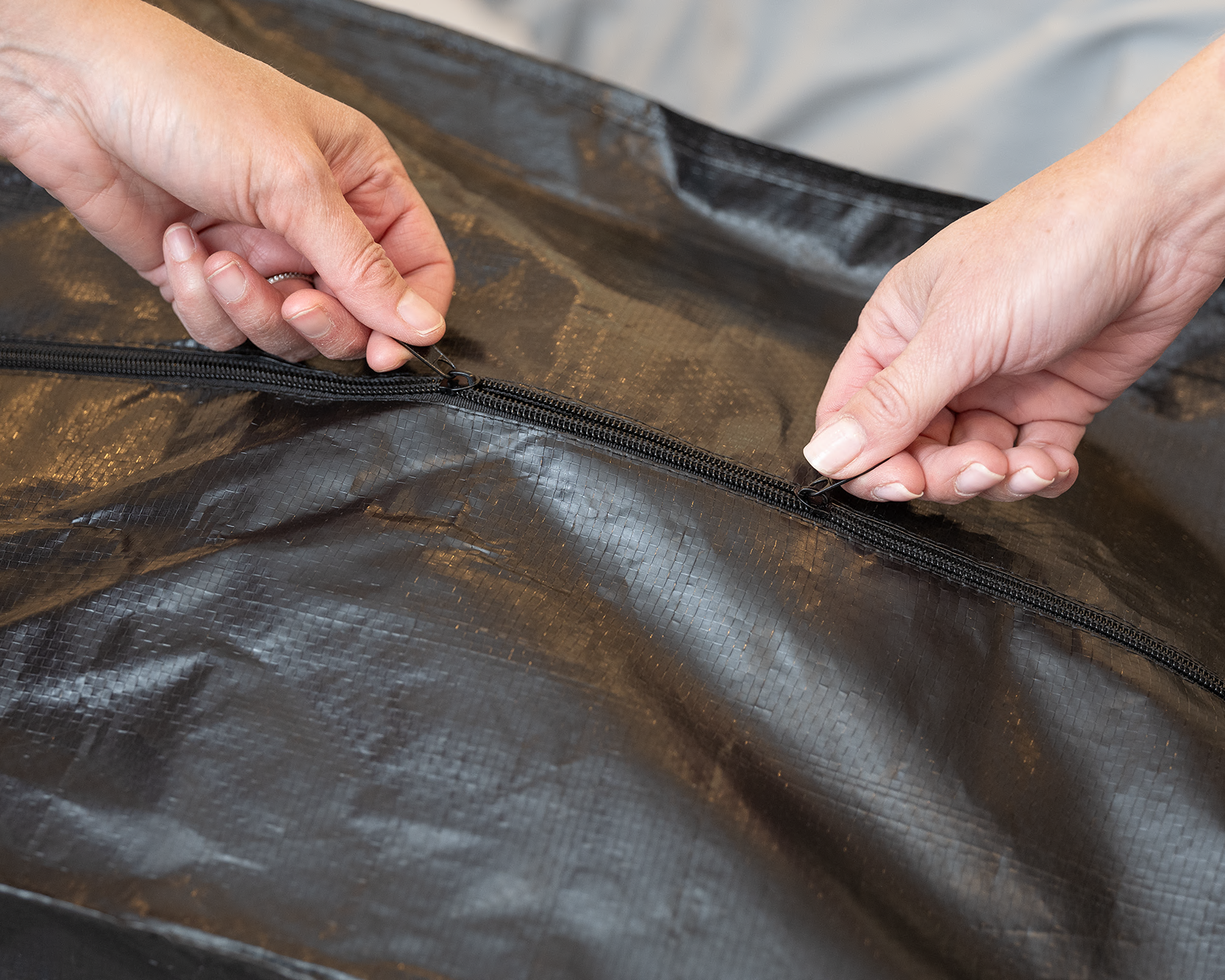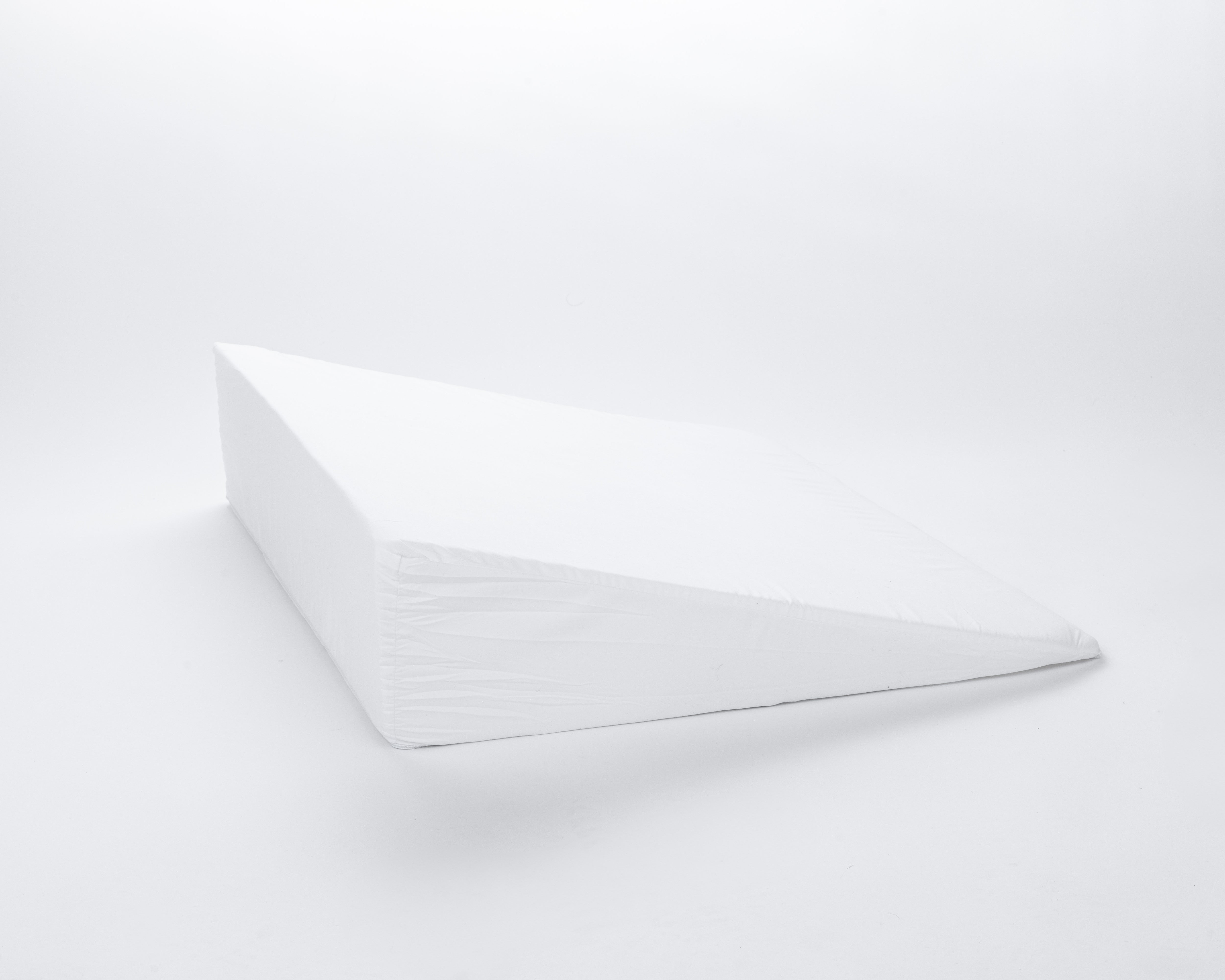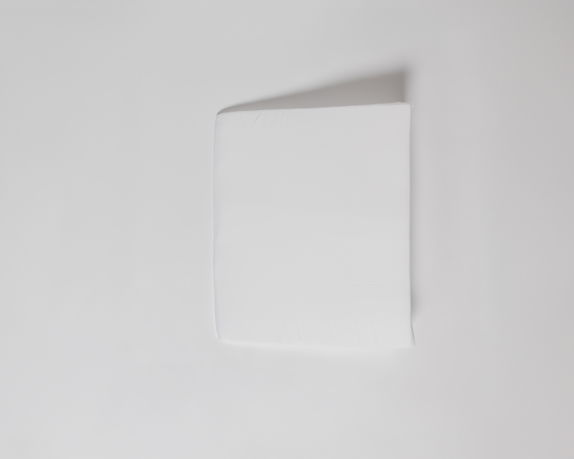Rachel Baumel, founder of Sleep Again Pillows, is herself a breast cancer survivor and underwent a double mastectomy as part of her journey. Read more about her story here.
Embarking on a mastectomy journey is both a physical and deeply personal emotional experience. Whether you're preparing for your own surgery or supporting someone you love, having the right recovery support can transform challenging days into more comfortable ones.
Your healing path is unique, and gathering items that nurture both body and spirit can make a tremendous difference in your recovery experience. This guide brings together wisdom from those who have walked this path before you — survivors, healthcare providers, and compassionate experts who understand what truly helps during this tender time of healing.

Preparing Mentally for Recovery
Preparing mentally for mastectomy recovery is just as important as gathering physical supplies. This journey affects not just your body, but your heart and mind as well. It's completely normal to feel a mix of emotions – relief, anxiety, grief, hope, or even all of these at once. Being gentle with yourself and acknowledging these feelings is an important first step in your healing journey.
The days and weeks after surgery can bring emotional challenges that even the most thorough physical preparation can't address. Taking some time now to nurture your emotional well-being will help you navigate the ups and downs of recovery with greater resilience and self-compassion.
Mental Preparation Strategies:
-
Give Yourself Permission to Feel - There's no "right way" to feel about your mastectomy. Some days you might feel strong and positive, while other days might bring tears or frustration. All of these emotions are valid parts of your healing journey. Creating space for your feelings rather than judging them can be deeply healing.
-
Connect with Your Support Circle - Reaching out to others who have walked this path can be incredibly comforting. Their firsthand experiences often provide insights that even the most caring medical professionals might not think to share.
-
Nurture Your Spirit - Learning simple relaxation techniques like gentle breathing exercises, guided imagery, or meditation can give you powerful tools for managing anxiety and discomfort during recovery. Even five minutes of mindful breathing can center you during challenging moments.
-
Embrace the Journey - Recovery isn't a straight line – it has twists, turns, progress, and setbacks. Approaching each day with patience and celebrating small victories helps create a mindset of healing rather than struggle. Remember that your body is doing incredible work to heal itself.
-
Honor Your Changing Body - Changes to your appearance may bring complex emotions. Speaking with someone who understands body image concerns related to cancer treatment can help you process these feelings and gradually develop a loving relationship with your healing body.
-
Create Your Support Team - Think about what kinds of support will be most meaningful to you – practical help, emotional presence, or perhaps some gentle distraction. Let people know specifically how they can help, whether it's preparing meals, joining you for gentle walks, or simply sitting with you in companionable silence.
-
Gather Comfort for Your Mind - Just as you're preparing physical comfort items, gather resources that nurture your spirit – favorite music, uplifting books, funny movies, or creative projects that can be done with limited mobility. These "soul comforts" can be powerful medicine during recovery.
-
Begin a Healing Journal - Writing can be a powerful way to process your experience. Consider starting a journal before surgery where you can express hopes, fears, and milestone moments. Your words might become a treasured record of your journey and perhaps even a light for others walking a similar path.
Recovery Timeline: What to Expect When
Understanding how recovery typically unfolds can help you prepare your heart and home for each phase of healing. Remember that your path is uniquely yours – some days may bring more challenges, while others might surprise you with unexpected strength and progress. This timeline offers gentle guidance rather than rigid expectations, helping you recognize the natural rhythm of healing and celebrate each small step forward.
The Hospital Stay (First Few Days):
-
Duration: Usually 1-3 days for mastectomy without reconstruction; perhaps 5-7 days if you've chosen immediate reconstruction
-
What You Might Experience: Your care team will help manage your comfort, monitor your healing, and teach you about drain care. Your body may feel different, and movement will be limited.
-
Gentle Focus: Rest is your primary healing work now. Allow others to care for you, and begin learning how to tend to your drains when you're ready.
First Week at Home:
-
Physical Sensations: Your body might feel tired, sore, and your chest may feel tight. Your arm mobility will be limited, and some swelling is completely normal.
-
Daily Rhythms: This is a time for gentle rest. Household activities will be very limited, and accepting help with meals and personal care is important self-care, not dependency.
-
Caring for Your Body: Learning to empty drains, keeping your incision clean, and taking pain medication before discomfort builds are your main healing tasks.
-
Small but Important Movements: Taking medications as your doctor recommends, carefully emptying drains, and making gentle movements as suggested by your care team will support your healing.
Weeks 2-3:
-
Changes in Your Body: You'll likely notice less sharp pain, though swelling continues. Your arm mobility will begin to improve, though still be limited.
-
Gentle Activities: You might begin taking short walks and handling simple self-care tasks, gradually increasing your activity as your body allows.
-
Medical Journey: Your surgical team may remove your drains during this time (typically 1-3 weeks after surgery), and you'll have a follow-up visit to check your healing.
-
Nurturing Movement: Your doctor may suggest gentle stretching exercises to prevent stiffness and support your body's natural healing process.
Weeks 4-6:
-
Healing Progress: Pain usually decreases significantly, your energy begins returning, and your arms will move more freely.
-
Daily Life: Many people begin resuming light household activities, enjoy longer walks, and feel more independent.
-
Continued Care: You'll still need to avoid lifting anything heavy (over 5-10 pounds), strenuous exercise, and driving if you're taking pain medication.
-
Emotional Healing: This is often a time of processing the changes to your body and beginning to adapt to your new normal – be gentle with yourself through this transition.
Weeks 6-8:
-
Physical Healing: Your surgical site has likely healed well externally, while internal healing continues.
-
Returning to Routines: Many daily activities resume, though still avoiding heavy lifting and vigorous exercise.
-
Ongoing Care: Follow-up appointments continue, and your doctor might recommend physical therapy to help restore full range of motion.
-
Work Life: Many people return to work during this time, depending on the physical demands of their job and their individual healing progress.
Months 2-3:
-
Body Recovery: External healing is nearly complete, with continued improvement in strength and energy.
-
Activity Renewal: With your doctor's blessing, you may begin returning to most pre-surgery activities and exercises.
-
Heart and Mind: Emotional adjustment continues as you integrate this experience into your life story with greater peace.
Beyond Six Months:
-
Physical Wellbeing: Most people reach their maximum physical recovery, though some numbness or tightness may remain a part of your new normal.
-
Active Living: Most women return to all pre-surgery activities they enjoy.
-
Ongoing Self-Care: Caring for your scars, addressing any persistent tightness through physical therapy, and emotional support remain important as needed.
-
For Those with Reconstruction: You might choose additional procedures during this time, such as nipple reconstruction or adjustments.
Remember that these are simply common patterns in the healing journey. Your body will write its own healing story, and listening to its wisdom is more important than following any timeline. Your healthcare team knows your unique situation and will guide you with personalized recommendations for your recovery.

Caring for Your Surgical Drains
After surgery, you'll likely have surgical drains emerging from your incisions. These thin tubes help your body heal by removing excess fluid from the surgical area for approximately 6-8 weeks. Though they might seem intimidating at first, learning to care for them comfortably will soon become second nature. Proper drain care prevents infection, reduces discomfort, and allows you to move with greater ease during your recovery. The right drain care supplies can transform this aspect of recovery from challenging to manageable.
Gentle Drain Care Companions:
-
Surgical Drain Holders - Surgical drain holders safely secure your drains against your body, preventing that uncomfortable pulling sensation on your incisions during everyday movements and especially during showers.
-
Post-Surgical Bras with Built-In Drain Management - Post-surgical bras that feature drain bulb holders help drains lay flat so they don’t get caught on clothing.
-
Extra Drainage Cups - These small containers let you measure daily fluid output, which your doctor will ask about. While your medical team may already provide these, having extras at home means always having clean ones available.

Dressing with Comfort and Grace
In the weeks following surgery, your arms will need some rest from reaching and lifting. Clothing that opens in front and accommodates your drains becomes essential not just for comfort, but for maintaining your independence and spirit. The right recovery wardrobe can significantly ease your daily routine by preventing strain on healing tissues and helping you feel more like yourself during a time of transition. These thoughtful clothing choices honor both your healing body and your desire to move through the world with dignity.
Wardrobe Companions for Your Journey:
-
Front-Button Pajamas and Shirts - Front-button pajamas are gentle garments that open completely in front, allowing you to dress without raising your arms above heart level.
-
Recovery Shirts with Purpose - Specially designed tops with hidden openings for drain tubing and secure inner pockets cradle your drains close to your body, providing both physical comfort and peace of mind.
-
Comfy Pants - Soft, loose pants with forgiving elastic waistbands become faithful companions during the 6-8 week recovery period.
-
Supportive Slip-on Shoes - Bending to tie shoes can strain healing tissues, making slip-on footwear a small but meaningful comfort.

Creating Comfort in Rest and Movement
Finding comfortable positions for rest, sleep, and daily activities can feel like a puzzle after mastectomy surgery. Your body is navigating new sensations, limited movement, and the presence of drains. Specialized post-surgery pillows cradle your healing body in ways that ordinary pillows simply cannot, reducing discomfort and helping maintain proper alignment. These thoughtful positioning aids become trusted companions, supporting not just your physical body but your healing journey.
Comfort Keepers for Body and Spirit:
-
Mastectomy Pillow - While there are several options on the market today, we believe our #1 doctor-recommended mastectomy pillow is the ultimate solution for healing after a mastectomy. Struggling to sleep following her double mastectomy became the inspiration for the Sleep Again Pillow System from Rachel Baumel. Read more about our story here.
-
Seatbelt Guardians - A seat belt pillow shields healing tissues from the pressure of seatbelts during car rides. Some even feature pockets for cooling gel packs to soothe tender areas.
-
Chest Pillow - A cushioned chest pillow is a must-have following any breast surgery. Thoughtfully designed to sit under your arms and over your chest, this pillow protects sensitive areas post-surgery.
Nurturing Personal Care and Hygiene
Feeling fresh and clean is a simple pleasure that becomes more complicated during recovery. Limited mobility and healing incisions require thoughtful approaches to personal care. In early recovery, showering may be temporarily off-limits, and even when permitted, navigating bathing with drains calls for gentle creativity. Adaptive personal care items help maintain your dignity and independence while protecting healing tissues. These nurturing products bridge the gap when traditional routines need modification, helping you feel more like yourself during recovery.
Gentle Self-Care Companions:
-
Refreshing Body Wipes - These soothing cloths bring the feeling of cleanliness on days when showering isn't possible, offering a refreshing touch to your skin.
-
Dry Shampoo Magic - This simple product freshens hair without water, bringing comfort and normalcy during the early recovery period.
-
Gentle Protection - Soft gauze pads and medical tape provide tender care for your incision if dressings need changing after showers.
-
Extended Reach - A long-handled sponge or loofah becomes a helpful friend, allowing you to cleanse hard-to-reach areas without straining healing tissues.
-
Throat Comfort - Surgery often requires a breathing tube that can leave your throat feeling sore afterward. Soothing lozenges or warm honey tea can offer welcome relief.
Embracing Comfort Through Discomfort
Nurturing your body through recovery means thoughtfully addressing pain and discomfort when they arise. Discomfort isn't just an inconvenience—it can slow healing, limit necessary movement, and affect your emotional well-being. While your medical team will provide guidance for prescription pain management, complementary comfort measures can address different types of sensations you may experience. Creating a mindful approach to comfort supports better rest, increased mobility, and a more peaceful recovery journey. Preparing these items before surgery ensures they're readily available when needed, a kindness to your future healing self.
Comfort Companions for Body and Spirit:
-
Cooling Touch - Gentle ice packs or gel packs can soothe areas of swelling and provide relief to tender surgical sites when used as directed by your care team.
-
Gentle Relief - Having recommended over-the-counter pain relievers like Advil or Tylenol on hand complements your prescribed medication plan.
-
Extended Reach - A simple backscratcher becomes surprisingly important when reaching certain areas becomes temporarily difficult.
Creating a Healing Home Environment
Your living space becomes your sanctuary during recovery. Thoughtfully preparing this environment before surgery can significantly ease your healing journey. Taking time to observe your daily routines and rearrange frequently used items prevents frustration, reduces dependency, and protects your healing tissues from strain. This preparation is a profound act of self-care—a gift to your future healing self who will appreciate these thoughtful adjustments during a vulnerable time.
Home Sanctuary Preparation:
-
Mindful Rearrangement - In the days before surgery, notice what items you regularly reach for and place them at counter height where they won't require stretching or reaching.
-
Bedside Comfort Station - Create a small oasis beside your rest area with essentials like a water bottle with a straw, medications, a phone charger, and comforting items all within easy reach.
-
Nourishment Planning - Healing requires energy, yet cooking will be challenging. Accept offers from friends and family to provide meals, or prepare simple options in advance that can be easily reheated.
Nurturing Your Heart and Spirit
Your recovery journey touches not just your physical body but your emotional and spiritual well-being. Finding resources that support your whole self—body, mind, and spirit—creates a foundation for deep healing. While physical recovery supplies address your body's needs, emotional support resources nurture your inner world during this time of transition. Creating space for both physical and emotional healing honors the wholeness of your experience and supports your return to well-being.
Helpful Healing Companions:
-
Thoughtful Recording - A simple notebook and pen become powerful tools for tracking medications, writing down questions for your doctor, and expressing your feelings about your journey.
-
Circle of Understanding - Connecting with others who have experienced a mastectomy brings a special kind of comfort—the knowledge that you're not alone and that others understand exactly what you're experiencing.
-
Gentle Distractions - Having books, magazines, or other light entertainment nearby offers moments of respite when you need a break from focusing on your body's healing work.
Honoring Your Budget While Supporting Your Healing
Recovery supplies are important, but they needn't become a financial burden during an already challenging time. The costs of surgery and recovery are significant enough without adding financial stress about support items. With thoughtful planning and knowledge of available resources, you can gather the items that will truly support your healing without unnecessary expense. Exploring nonprofit resources, insurance benefits, and the generosity of your community helps direct financial resources where they're most needed.
Mindful Resource Planning:
-
BRCAStrong Gift of Support - This compassionate nonprofit offers free pre-mastectomy care packages to all women undergoing mastectomies, regardless of financial situation, providing many essentials in one thoughtful package.
-
Insurance Possibilities - Some insurance plans cover post-surgical garments and supplies when prescribed by your doctor. A conversation with your surgeon before surgery can help identify what might be covered.
-
Wish List Wisdom - When friends and family ask how they can help, a specific wish list of recovery items allows them to offer meaningful support in ways that truly benefit your healing. Sending links to gift cards, such as this one, to help fund a mastectomy pillow, can be a great way to generate support.
-
FSA/HSA Treasure Chest - Many mastectomy recovery supplies qualify for payment with Flexible Spending Accounts (FSA) or Health Savings Accounts (HSA), offering significant tax savings. Eligible items typically include:
-
Supportive mastectomy bras and prosthetic forms
-
Comfort-giving compression garments
-
Healing-focused drain management supplies
-
Soothing pain management items (ice packs, recommended pain relievers)
-
Prescribed medications
-
Gentle scar treatment products
-
Hospital Resource Connection - Speak with your hospital's social worker about recovery supplies they may provide or community resources they can connect you with.
-
Local Support Organizations - Many communities have cancer support organizations that offer financial assistance or free recovery items to patients.
-
Record Keeping - Keep receipts for all medical-related purchases, as some may be reimbursable by insurance or qualify as tax-deductible medical expenses.
Gentle Reflections for Your Journey
Your healing path is uniquely yours, unfolding at its own natural pace. Be patient with your body and tender with your heart during this time of recovery. Remember that healing isn't measured only in days or weeks, but in small moments of progress, comfort, and returning strength.
This collection of mastectomy recovery must-haves comes from those who have walked this path before you – fellow travelers who have generously shared what brought them comfort and ease during their healing journey. While each experience is uniquely personal, these thoughtful items have offered support to many hearts and bodies along the way.
May your recovery be gentle, your support circle strong, and your return to wholeness filled with moments of unexpected grace and beauty.
Note: Always partner with your healthcare team for personalized guidance about your specific recovery needs. This collection of wisdom complements, but never replaces, the care plan created by your medical providers.
Printable Mastectomy Recovery Checklist
This gentle checklist helps ensure you have nurturing supports ready for your recovery journey. As you gather these items—whether through your own preparation, friends' generosity, or care packages—check them off knowing each represents a form of self-care.
Download and share this PDF checklist with loved ones who want to support your healing but may not know exactly what would help.
Drain Care Companions
-
[ ] Soft drain belt or apron
-
[ ] Extra drainage cups
-
[ ] Mesh shower bag for drains
-
[ ] Safety pins (for gentle securing)
Comfort-First Clothing
-
[ ] Front-button pajamas/shirts (3-4 for rotation)
-
[ ] Recovery shirts with drain openings
-
[ ] Zip-front hoodies with inner pockets
-
[ ] Gentle elastic-waist pants (2-3 pairs)
-
[ ] Supportive slip-on shoes
-
[ ] Post-surgical camisole (if recommended)
Body-Supporting Comfort Aids
Gentle Personal Care
-
[ ] Refreshing body wipes
-
[ ] Dry shampoo
-
[ ] Soft gauze pads
-
[ ] Gentle medical tape
-
[ ] Long-handled sponge or loofah
-
[ ] Mild, fragrance-free soap
-
[ ] Soothing throat lozenges or honey
-
[ ] Hand sanitizer
Comfort Measures
-
[ ] Soft ice packs or gel packs
-
[ ] Gentle heating pad (for later recovery)
-
[ ] Recommended pain relievers
-
[ ] Medication tracker/timer
-
[ ] Helpful backscratcher
-
[ ] Soft, comforting blanket
Home Sanctuary Creation
-
[ ] Bedside organizer
-
[ ] Water bottle with easy-sip straw
-
[ ] Extended phone charger
-
[ ] Supportive reading pillow
-
[ ] Extra soft pillowcases
-
[ ] Meal containers for easy reheating
-
[ ] Porch cooler (for meal deliveries)
Heart and Spirit Support
-
[ ] Reflection journal and pen
-
[ ] Support group contact information
-
[ ] Uplifting books or magazines
-
[ ] Comforting shows or movies list
-
[ ] Medical team contact information
-
[ ] Appointment calendar
-
[ ] Support circle contact list
Pre-Surgery Preparation
-
[ ] Frequently used items moved to easy reach
-
[ ] Nourishing meals prepared or arranged
-
[ ] Healing space created (bed or recliner)
-
[ ] Help arranged for household needs
-
[ ] Regular medications refilled
-
[ ] Hospital comfort bag packed
-
[ ] Calming meditation resources ready
-
[ ] Payment method for prescriptions
FSA/HSA Eligible Items (Save Receipts)
-
[ ] Mastectomy bras and prosthetics
-
[ ] Compression garments
-
[ ] Drain management supplies
-
[ ] Pain relief items
-
[ ] Prescribed medications
-
[ ] Scar care products
-
[ ] Medical support pillows (with LMN)
Note: Your personal needs may vary based on your unique procedure and situation. This checklist is a starting point to be refined in partnership with your healthcare team.



